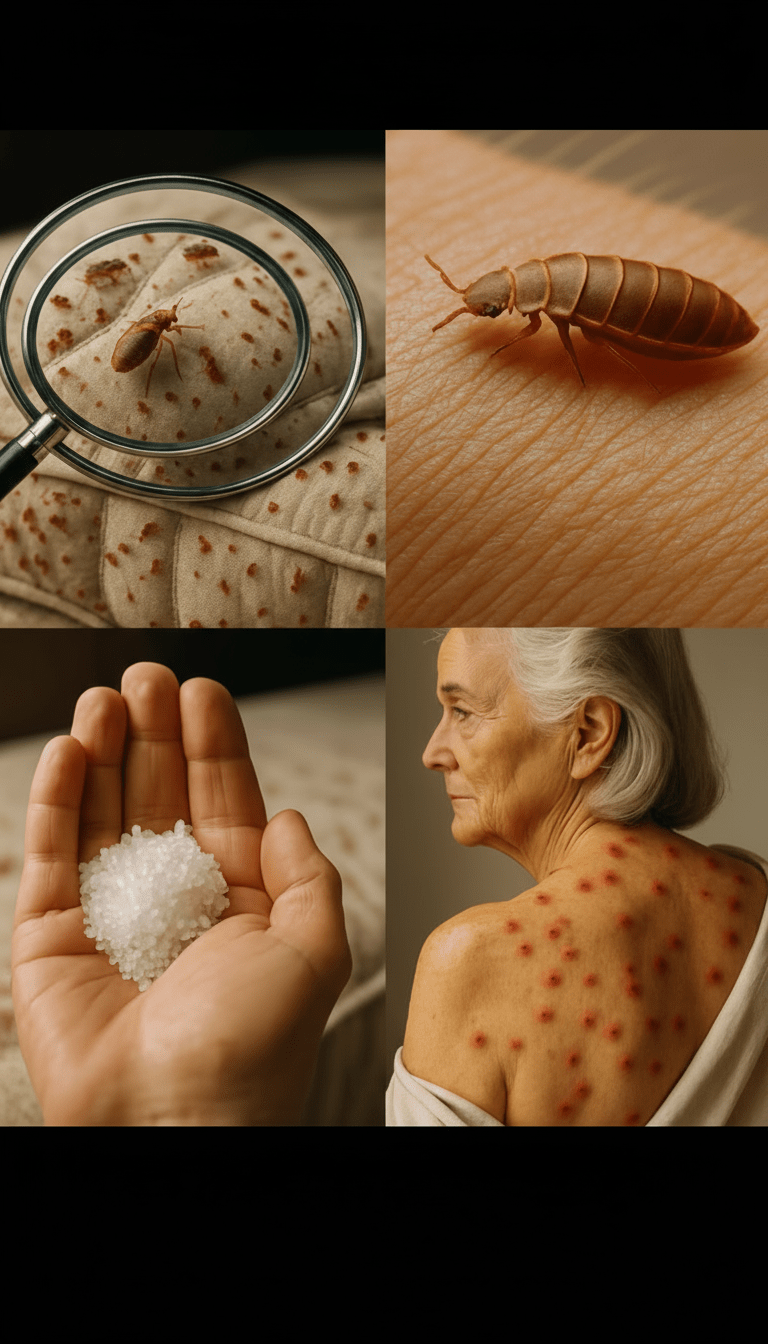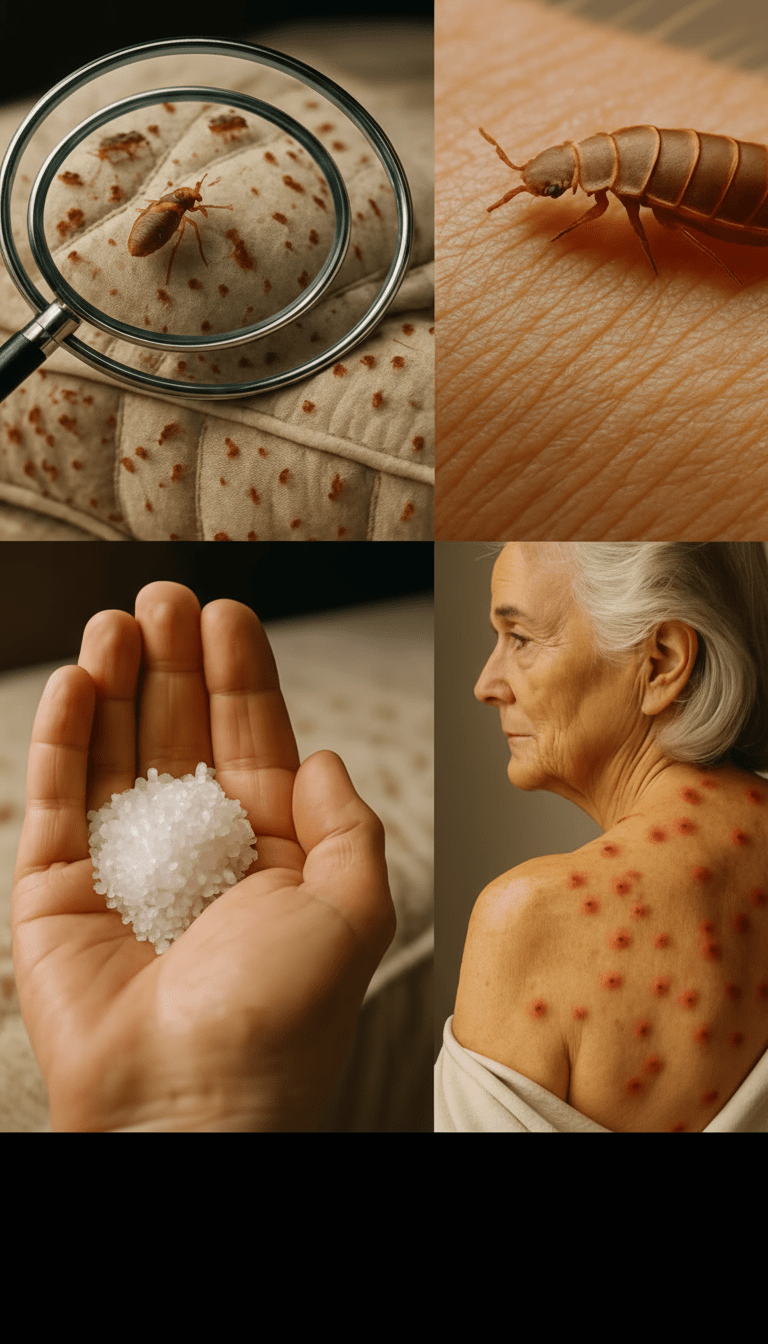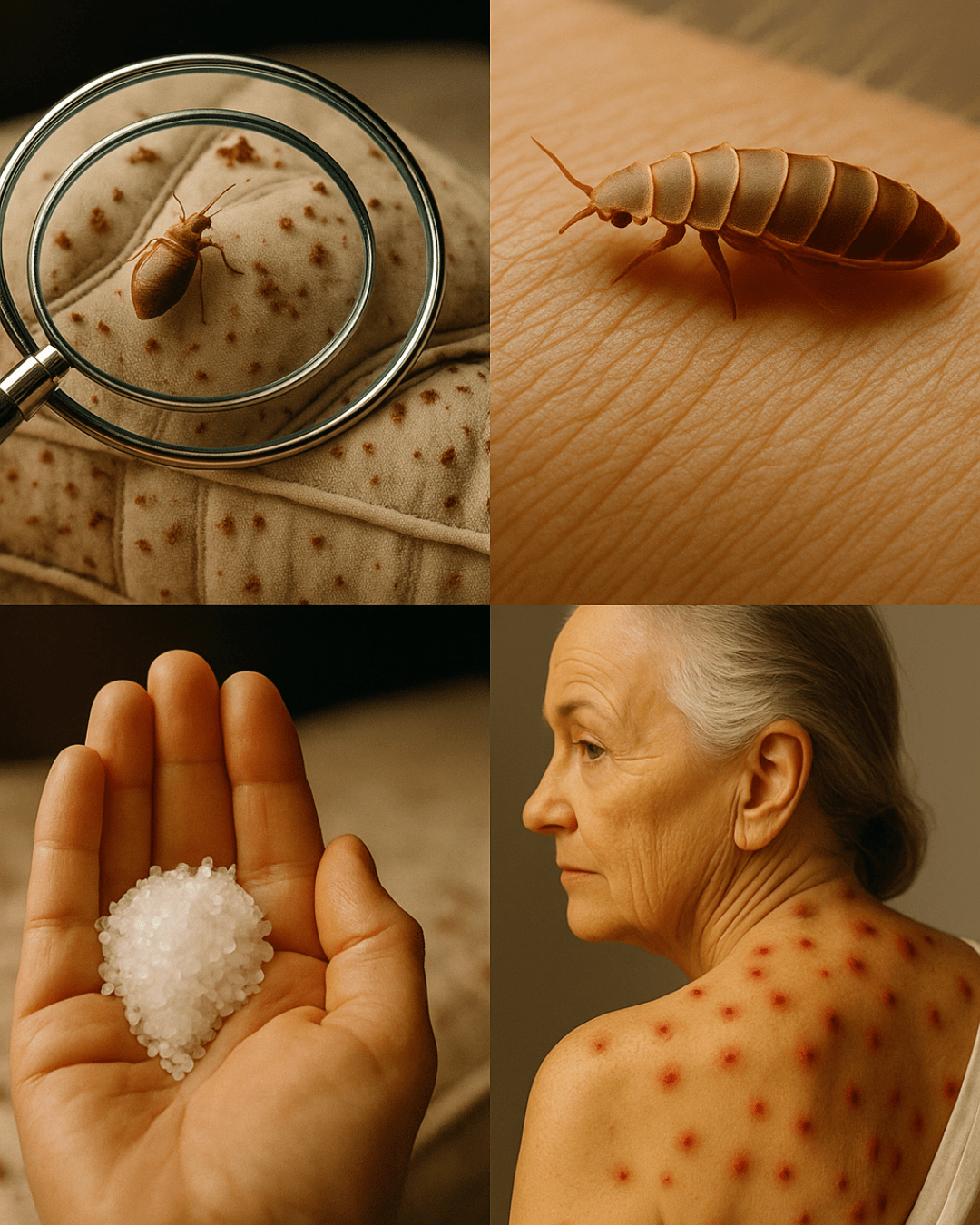The sanctuary of your bed, the place where you retreat for comfort and rest, may harbor a hidden, microscopic horror that is silently undermining your health, triggering allergic reactions, and feasting while you sleep. We are talking about the two most pervasive and frustrating nocturnal invaders: Dust Mites and Bedbugs. While dust mites are microscopic scavengers thriving on dead skin and causing chronic respiratory issues, bedbugs are larger, stealthier bloodsuckers leaving behind itchy, inflamed welts. Both infest your mattresses, pillows, and furniture, yet most people rely on harsh chemical sprays or ineffective, costly professional interventions.

Imagine waking up feeling genuinely rested, free from the mysterious itching, chronic congestion, or the anxiety of a hidden infestation. The secret to reclaiming your sleep and sanitizing your home lies not in toxic pesticides, but in powerful, simple natural secrets—time-tested, safe methods that effectively desiccate, repel, and eliminate these pests forever. Prepare to uncover the terrifying truth about what shares your bed, understand the key differences between these two invaders, and master the natural, step-by-step solutions designed to permanently banish dust mites and bedbugs. This comprehensive, meticulously detailed guide is crafted to hold your unwavering attention until you transform your bedroom into a clean, safe, and truly restorative haven.
🦠 The Invisible Enemy: Dust Mites vs. Bedbugs—Know Your Foe
To effectively banish these pests, you must first understand the fundamental differences between the microscopic allergen source and the visible, feeding parasite.
| Pest | Size/Appearance | Diet/Impact | Primary Health Concern |
| Dust Mites (Dermatophagoides spp.) | Microscopic (0.2-0.3mm). Invisible to the naked eye. | Feed on dead human skin flakes (dander) and fungal spores. | Their fecal matter and decaying bodies are powerful allergens, triggering asthma, chronic congestion, sneezing, and itchy skin/eyes. |
| Bedbugs (Cimex lectularius) | Visible (4-7mm). Flat, reddish-brown, oval shape. Swell and turn darker red after feeding. | Exclusively feed on blood, typically while the host is asleep. | Leaving behind characteristic itchy, red bite marks, often in linear clusters or zig-zag patterns on exposed skin. |
🚨 Crucial Takeaway: If you have chronic morning congestion, sneezing, or asthma, you are battling Dust Mites. If you wake up with unexplained, raised, itchy red welts, you are battling Bedbugs. The solutions, though both natural, require different strategies.
🛏️ The Dust Mite Battle Plan: Reducing the Allergen Load Naturally
Dust mites thrive in warm, humid environments and feed on organic matter. The goal is to dehydrate them and remove their food source.
1. 🔥 Heat Desiccation: The Weekly Wash Ritual
- The Mechanism: Dust mites cannot survive temperatures above 130°F (54°C).
- The Solution: Every week, wash all bedding—sheets, pillowcases, and blankets—in the hottest water cycle your washing machine allows. Ensure the dryer is set to high heat for at least 15 minutes.
- The Benefit: This is the single most effective, natural way to kill mites and wash away their allergy-inducing fecal matter and exoskeletons, drastically reducing the allergen load in your bed.
2. 🥶 Cold Shock: The Non-Washables
- The Mechanism: Extreme cold also kills mites by freezing their internal systems.
- The Solution: For non-washable items like pillows, small stuffed toys, or removable decorative cushions, place them in airtight plastic bags and put them in the freezer for at least 48 hours.
- The Benefit: A simple, non-chemical way to sanitize items that cannot tolerate the washing machine’s high heat.
3. ☀️ Sun and Air: The Natural Sanitizer
- The Mechanism: Direct sunlight and low humidity are highly lethal to dust mites.
- The Solution: On a hot, dry, sunny day, take your blankets, pillows, and mattress pads outdoors and hang them in direct sunlight for several hours.
- The Benefit: The heat from the sun and the reduction in humidity actively dehydrate and kill the mites, while the UV light provides powerful natural sanitation.

4. 💨 HEPA Filtration and Vacuuming
- The Mechanism: Physically removing the mites and their allergens from carpeting and mattresses.
- The Solution: Invest in a vacuum cleaner with a certified HEPA filter (High-Efficiency Particulate Air). Vacuum your mattress thoroughly (including the sides and seams) and all bedroom carpeting at least once a week.
- The Benefit: A HEPA filter ensures that microscopic allergens are captured and not simply recirculated back into the air, providing immediate air quality relief.
🚫 The Bedbug Eradication Strategy: Sealing and Desiccation
Bedbugs are far tougher and more resilient than dust mites. They require a more aggressive, multi-step approach focused on physical elimination and environmental stress.
1. 🌫️ Diatomaceous Earth (DE): The Natural Desiccant
- The Mechanism: Food-grade Diatomaceous Earth is a fine powder made of fossilized diatoms. To insects, this powder acts like microscopic shards of glass, piercing their waxy outer cuticle and causing them to dehydrate and die.
- The Solution: Lightly sprinkle DE powder along baseboards, behind electrical sockets (use caution), and along the mattress seams and frame crevices where bedbugs hide. Leave it for several days before vacuuming.
- The Benefit: A highly effective, non-toxic, and natural physical killer.
2. 💨 Steam Treatment: Targeting Hiding Spots
- The Mechanism: Bedbugs and their eggs are instantly killed when exposed to temperatures exceeding 120°F (49°C).
- The Solution: Use a high-quality steam cleaner with a narrow nozzle attachment. Slowly apply the steam directly to mattress seams, box springs, sofa crevices, and behind headboards. Hold the steam jet over one spot for 5-7 seconds.
- The Benefit: This is the best, natural way to kill bugs and eggs on contact in hard-to-reach areas and in the fabric of the mattress without chemical residue.
3. 🧊 Isopropyl Alcohol (The Immediate Killer)
- The Mechanism: High-concentration (70% or higher) isopropyl alcohol dissolves the bug’s outer shell, killing them instantly upon contact.
- The Solution: Place alcohol in a spray bottle. Use it to spray visible bedbugs directly. Do not use alcohol on large areas of fabric, as it can cause damage or discoloration.
- The Benefit: Provides an immediate, on-the-spot kill for visible bugs.
4. 🛡️ Mattress Encasing: The Permanent Barrier
- The Mechanism: This is a vital step to starve the remaining bugs and protect against new infestations.
- The Solution: Purchase high-quality, bedbug-proof mattress and box spring encasements (covers). Zip the mattress and box spring fully inside these impenetrable fabric covers.
- The Benefit: Any bugs trapped inside will eventually starve (a process that can take over a year), and new bugs are prevented from infesting the mattress, eliminating the primary hiding spot. Do not remove these for at least 18 months.

🌿 The Essential Oil Arsenal: Natural Repellents and Sanitizers
Certain essential oils possess volatile compounds (monoterpenes) that are potent natural insect repellents and killers, making them perfect for preventive room sprays.
| Essential Oil | Primary Active Compound | Natural Pest Action |
| Tea Tree Oil | Terpinen-4-ol | Strong Antimicrobial and Antifungal—ideal for dust mite control and surface cleaning. |
| Clove Oil | Eugenol | Highly effective natural insect killer and repellent against bedbugs and mites. |
| Lavender Oil | Linalool | Gentle Repellent and provides a soothing aroma for sleep—use in sprays. |
| Peppermint Oil | Menthol | Strong Repellent and excellent for creating protective barriers along window sills or doorways. |
DIY Repellent Spray Recipe: Mix 15–20 drops total of your chosen essential oils (e.g., Tea Tree and Clove) with 1 cup of distilled water and 1 tablespoon of witch hazel (as an emulsifier). Shake well and spray daily on carpets, curtains, and non-washable furniture.
🏆 Final Conclusion: Reclaiming Your Sleep Sanctuary
The thought of sharing your bed with dust mites and bedbugs is understandably disturbing, but the solution does not have to involve panic or harsh chemicals. By implementing this strategic, dual-action plan—focused on the high-heat desiccation and cleaning required for Dust Mites, and the physical, sealing, and chemical-free killing methods required for Bedbugs—you gain complete control. Reclaiming your bed as a sanctuary is a commitment to regular, high-temperature cleaning, strategic vacuuming, and the powerful, non-toxic support of natural desiccants and essential oils. Start today: clean your sheets, heat-treat your bed, and banish these invisible threats forever, ensuring your sleep is genuinely restorative and your health is fully protected.
Would you be interested in learning about other natural remedies for dealing with pet dander and allergies in the home?






